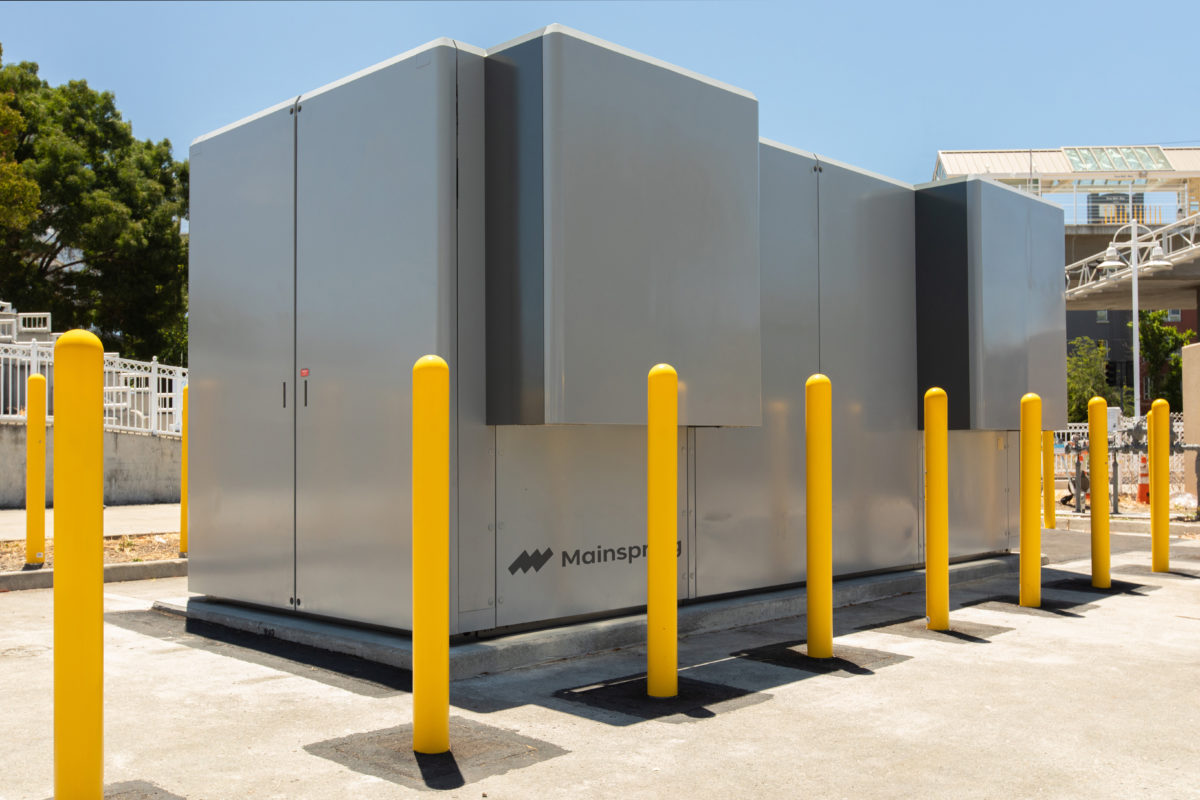Mainspring Energy has adapted its linear generators so they can run on hydrogen or ammonia fuel, on top of widely available fuels such as natural gas and biogas.
“The generator has passed key tests to directly run 100% hydrogen and 100% ammonia fuels at high efficiencies,” said company spokesperson Maria Amundson. “It may be used to displace intensive diesel generators at data centers, hospitals, grocery stores, and in behind-the-meter applications as well as in large grids and microgrids.”
The company says the linear generator can ramp up and down quickly via solar. It also has the ability to dynamically switch between different kinds of fuels.
In order to make the generator work with hydrogen and ammonia, the company created a new design incorporating new power electronics.
“Our generator automatically adapts to the composition of incoming fuels and responds accordingly with precise control of the reaction to maximize efficiency,” said Amundson.
Popular content
Mainspring Energy offers the solution in 230 kW packages with two linear generator cores. It claims the generators can be linked with similar devices to reach a capacity of up to 15 MW.
“Projects greater than 1.5 MW can be optimally designed with the use of external inverters,” it sad. Each generator measures 20.5 meters x 8.5 meters x 9.5 meters, weighs 20 tons, and can operate at temperatures ranging from -20 C to 50 C.

Image: Mainspring Energy
The generator, like its previous version running on natural gas or biogas, uses a low-temperature reaction of air and fuel to drive magnets through copper coils to produce electricity. The electrically controlled linear motion of oscillators embedded in the system compresses the fuel and air mixture until the mixture reacts uniformly and instantaneously without a flame or burning.
This reaction drives the two oscillators carrying magnets through copper coils and produces electricity through linear motion. Outer springs are then compressed to return the oscillators for the next cycle.
This content is protected by copyright and may not be reused. If you want to cooperate with us and would like to reuse some of our content, please contact: editors@pv-magazine.com.



1 comment
By submitting this form you agree to pv magazine using your data for the purposes of publishing your comment.
Your personal data will only be disclosed or otherwise transmitted to third parties for the purposes of spam filtering or if this is necessary for technical maintenance of the website. Any other transfer to third parties will not take place unless this is justified on the basis of applicable data protection regulations or if pv magazine is legally obliged to do so.
You may revoke this consent at any time with effect for the future, in which case your personal data will be deleted immediately. Otherwise, your data will be deleted if pv magazine has processed your request or the purpose of data storage is fulfilled.
Further information on data privacy can be found in our Data Protection Policy.